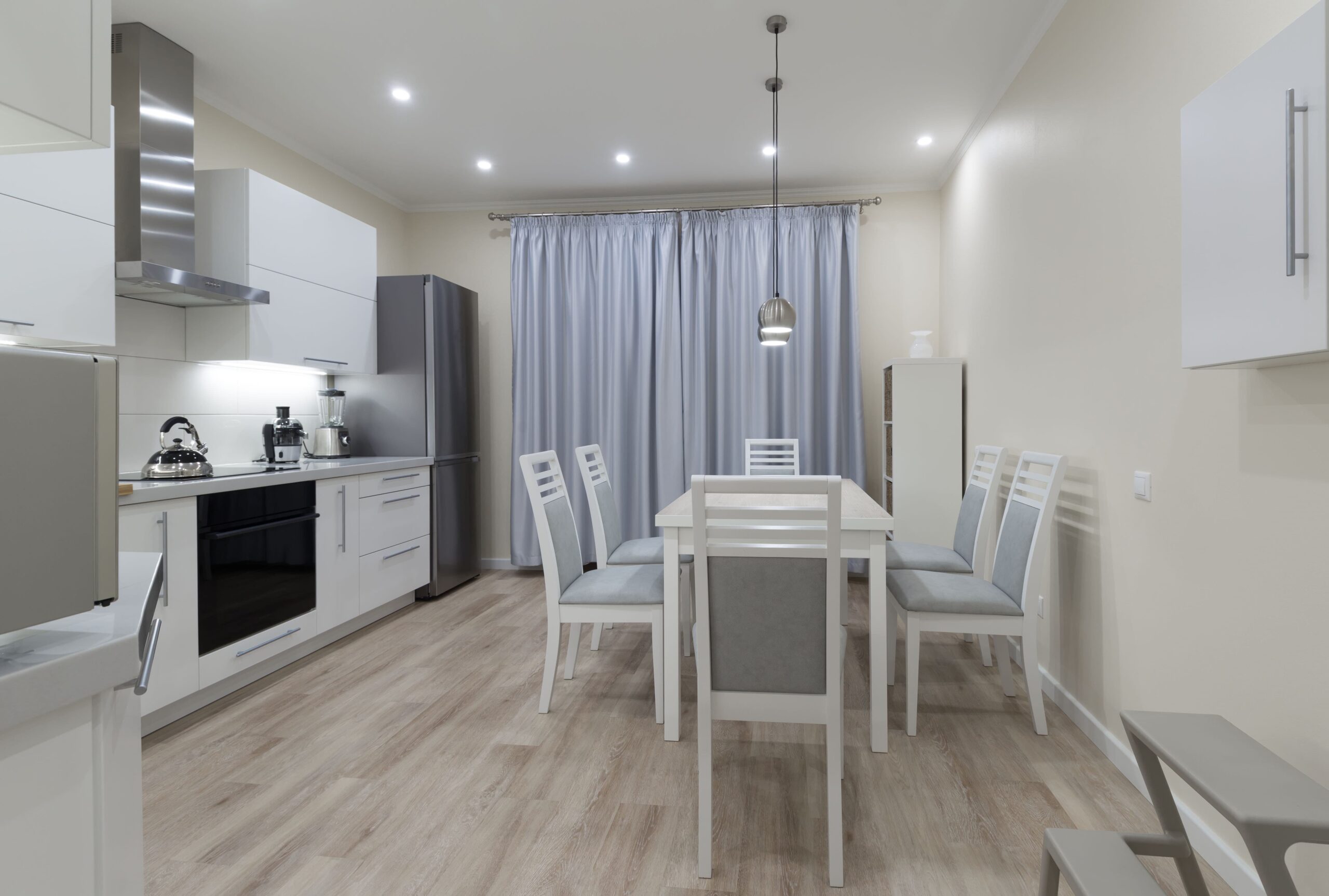There are a lot of factors to consider when choosing flooring for your kitchen. You want something that is durable, easy to clean, and stylish. Many people choose vinyl flooring for kitchens because it meets all of these criteria. In this blog post, we will discuss the pros and cons of vinyl flooring and give you tips on how to care for it properly. We will also show you how to spot damage and repair it if necessary. So, whether you are considering vinyl flooring for your next kitchen renovation or just want to learn more about it, keep reading!
Why Vinyl Flooring is the Best Choice for Your Kitchen
There are many reasons why vinyl flooring is the best choice for your kitchen. First of all, it is very durable and easy to care for. It can withstand a lot of wear and tear and is resistant to scratches, stains, and spills. Additionally, it is very easy to clean; you can just sweep or mop it as needed. Vinyl flooring is also a very affordable option, which is important for many people. Finally, it comes in a variety of colors and styles, so you can find something that fits your taste and kitchen décor.
However, there are a few things to keep in mind when choosing vinyl flooring for your kitchen. First of all, it is not as heat resistant as other materials, so you should avoid putting hot pans or appliances on it. Additionally, it can be slippery when wet, so be sure to use caution when walking on it in bare feet or with wet shoes. Lastly, vinyl flooring is not as durable as some other options, so it may not last as long in a high-traffic kitchen.
Now that you know the pros and cons of vinyl flooring, let’s discuss how to care for it properly. First of all, you should sweep or vacuum it regularly to remove dirt and debris. Additionally, you should mop it with a gentle cleanser as needed. Be sure to avoid using harsh chemicals or scrubbing too hard, as this can damage the floor. If you spill something on your vinyl floor, be sure to clean it up immediately; if it is left to sit, it can stain the floor.
If you take proper care of your vinyl floor, it will last for many years. However, there are a few things that can damage it. First of all, sunlight can fade the color over time. Additionally, sharp objects can scratch or puncture the flooring. If your vinyl floor does become damaged, there are a few ways to repair it. For small scratches or chips, you can use a touch-up kit; for larger areas of damage, you may need to replace the flooring entirely.
As you can see, vinyl flooring has many benefits and a few drawbacks. However, if you take proper care of it, it will last for many years. So, if you are looking for an affordable, stylish, and easy-to-care-for option for your kitchen, vinyl flooring is a great choice!
Vinyl Flooring in Your Kitchen: The Pros and Cons
There are a lot of factors to consider when choosing flooring for your kitchen. You want something that is durable, easy to clean, and stylish. Many people choose vinyl flooring for their kitchens because it meets all of these criteria. In this blog post, we will discuss the pros and cons of vinyl flooring and give you tips on how to care for it properly. We will also show you how to spot damage and repair it if necessary. So, whether you are considering vinyl flooring for your next kitchen renovation or just want to learn more about it, keep reading!
How to care for your vinyl floors
Tile roofing is a popular choice for homeowners because it is durable and lasts a long time. However, tile roofing can be expensive and difficult to install, so it is important to know how to care for your tile roof. Tile roofs should be inspected regularly for cracked or missing tiles, and the gutters should be cleaned of leaves and debris to prevent clogging. Tile roofs also require more maintenance than other types of roofing, so it is important to hire a professional roofer who can perform regular repairs and maintenance. With proper care, your tile roof will last for many years.
Tips for cleaning and maintaining your vinyl floor
Tile roofing is a type of roofing that uses tiles made of clay or concrete to cover the roof. Tile roofs are popular in locations with hot climates because they help keep homes cool by reflecting heat away from the house. Tile roofs are also durable and can last for many years with proper maintenance. Here are some tips for cleaning and maintaining your tile roof:
1. Inspect your tile roof regularly for cracked or broken tiles. Damaged tiles can allow water to enter your home, causing damage to the structure and creating the perfect environment for mold and mildew to thrive.
Sweep away any debris that has accumulated on your roof, such as leaves or branches. This will help prevent clogs in your gutters and downspouts.
If you have trees near your home, have them trimmed on a regular basis to prevent branches from falling on your roof and causing damage.
When cleaning your tile roof, use a gentle cleanser and soft brush to avoid damaging the tiles. Never use a pressure washer on a tile roof, as this can force water underneath the tiles and cause damage to the structure of your home.
Following these simple tips will help you keep your tile roof in good condition for many years to come.
